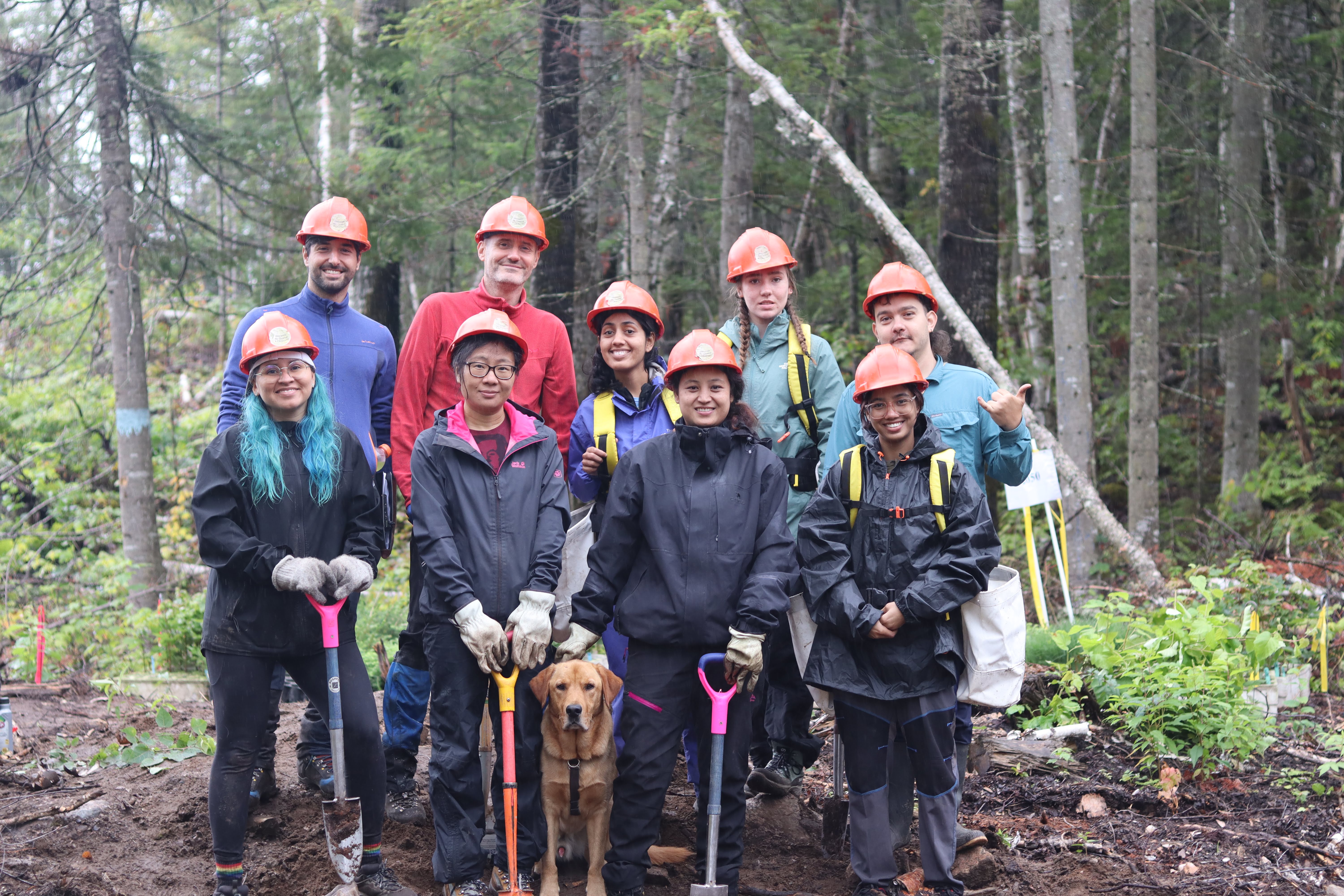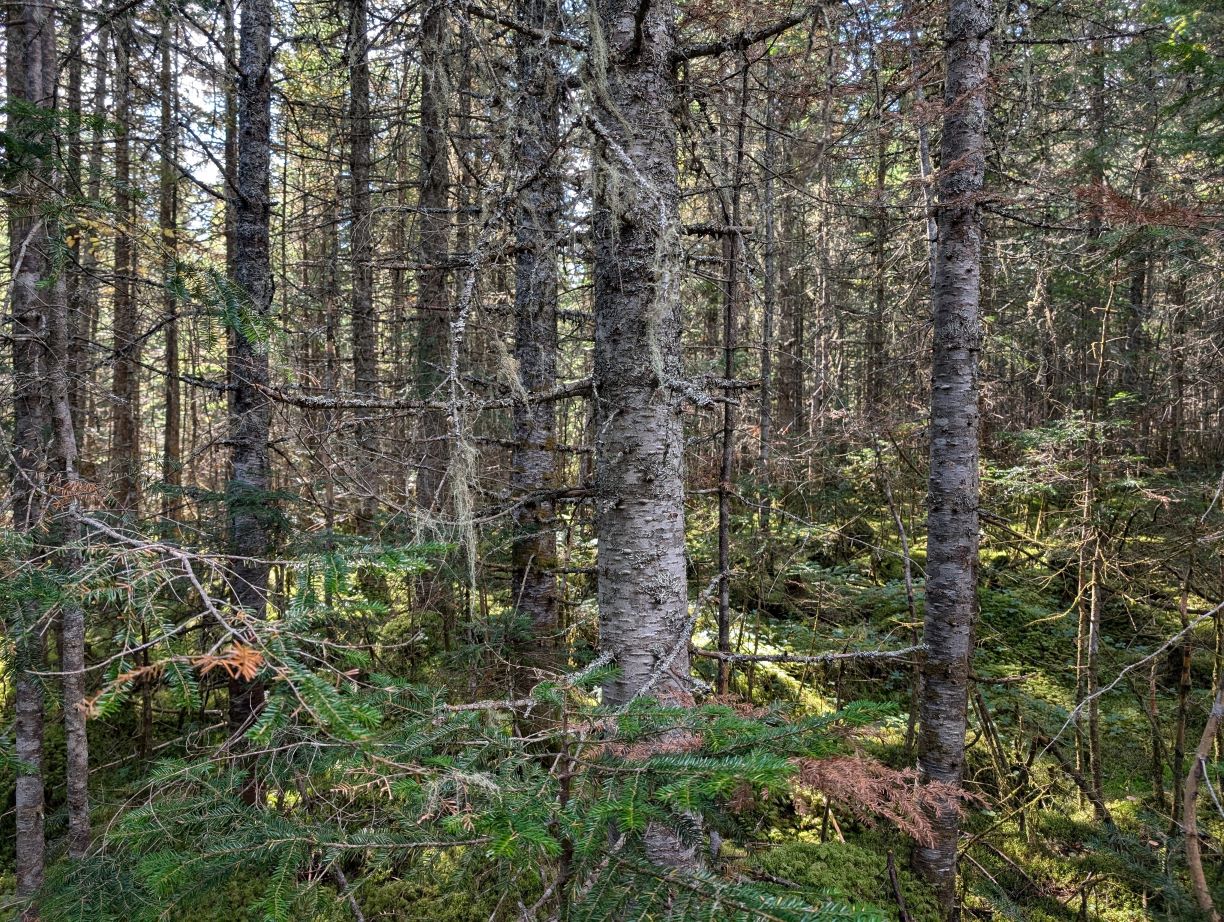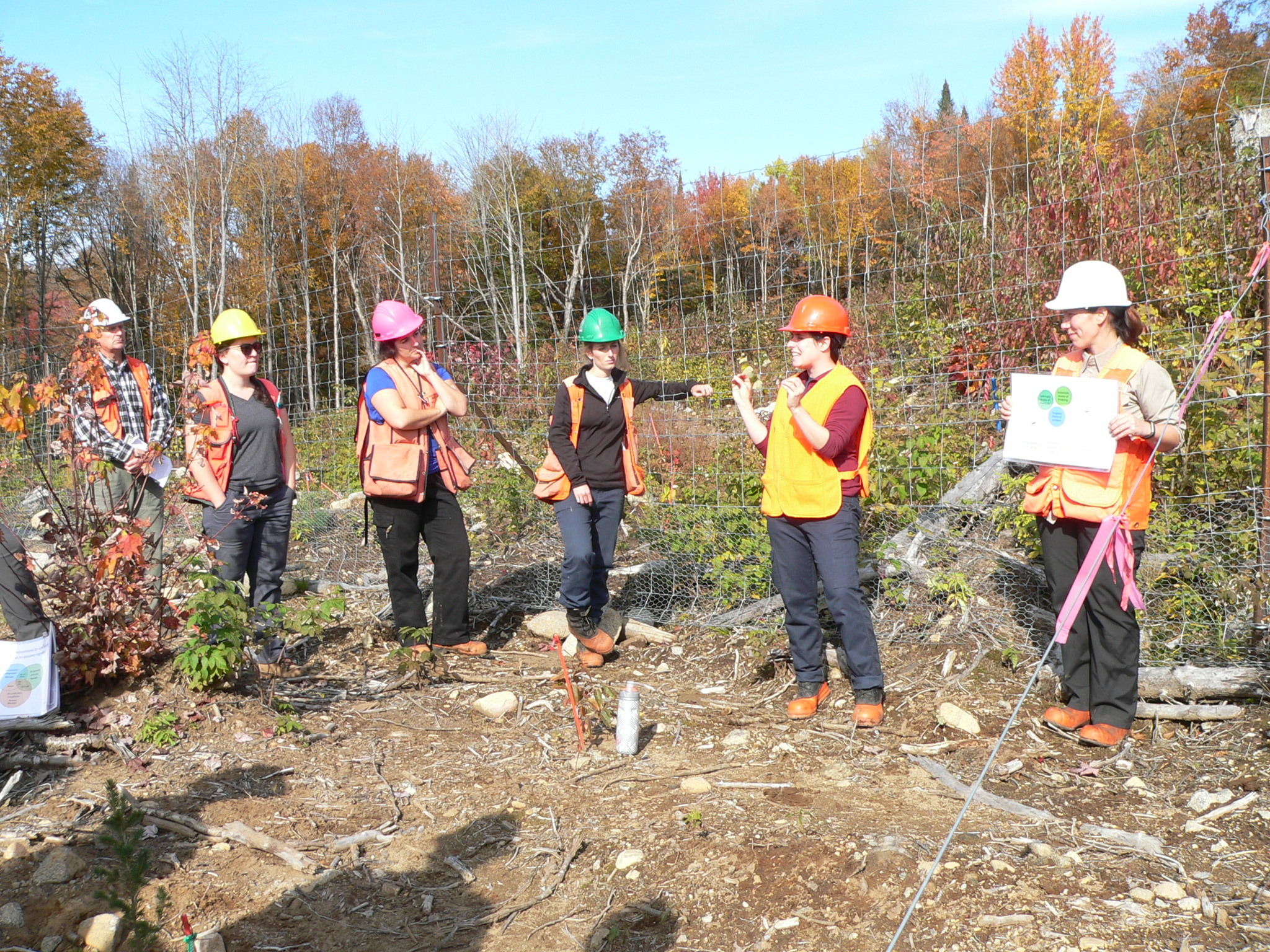Research Projects
Overview
The Forêt d'Enseignement et de Recherche de Simoncouche (FERS) is the northernmost site in the DREAM network, playing a critical role in understanding forest dynamics at the transitional zone between temperate and boreal forests. Located in the northwestern part of the Réserve faunique des Laurentides, a 20-minute drive from Chicoutimi, the FERS is managed by the Université du Québec à Chicoutimi. Established in 2024, this plantation is located in the mixedwood forest, at the northern edge of the yellow birch–balsam fir domain. The FERS site is uniquely positioned to provide valuable data on the survival and growth of five tree species, offering insights into the dynamics of species acclimation and competition at the transitional zone between two major forest ecosystems of Northern North America. The data collected at FERS will help identify which seed sources, based on their geographic origin, are best suited for successful establishment in a context of climate change.
Professor Sergio Rossi and his research group oversee the FERS site, which is an integral part of the DREAM network. This network facilitates extensive research collaboration, involving multiple collaborations with governmental and academic organisms, such as the Ministère des Ressources Narturelles et des Forêts du Québec, the Université Laval, the USDA Forest Service, and the Université du Québec à Chicoutimi, and several regional and provincial partners in Quebec.
Overview
The Montmorency Forest is the experimental forest of Laval University, located approximately 60 km north of Quebec City. It is located in the boreal zone and is strongly dominated by balsam fir. The DREAM site which will be implemented at the Montmorency Forest will aim to test the performance of 5 tree species originating from 3 provenances, planted following clearcuts and two types of partial cuttings (30% and 50% removal). Implementation of this site will begin in the fall of 2024 (application of different types of cuts), and the plantings will take place at the end of summer 2025.
Overview
The experimental sites of the Réserve faunique de Portneuf are the firsts of the Québec component and of the DREAM network. In 2018, the site of the Lac-des-Amanites was established in a mixedwood temperate forest to evaluate the potential of assisted migration to restore resinous yellow-birch stands impoverished by past practices. The second site of Lac-à-Charles (establishment in 2024) is located in a northern hardwood forest. It will help us understand how to improve the composition and resilience of maple stands invaded by American beech. On top of providing essential data regarding the survival and growth of twelve tree species, these plantations will help us determine which seed source should be used (e.g., local or southern) as well as the conditions favouring a successful establishment.
The sites of Lac-des-Amanites and Lac-à-Charles are under the responsability of Ministère des Ressources naturelles et des Forêts. Multiple research projects involving the DREAM network are planned there, in collaboration with the USDA Forest Service, Université Laval and Université du Québec à Chicoutimi.
Overview
The Pine Popple DREAM research site is located within the Wild Rivers Legacy Forest in northeastern Wisconsin and is managed by the Wisconsin Department of Natural Resources. The 66 hectare/162 acre experimental site is characterized as a northern hardwood forest with silt loam soils and an overstory dominated by sugar maple (Acer saccharum). The stand was likely degraded by management legacies, white-tailed deer overbrowsing, and earthworms. These various legacies challenge sustainable management and, thus, offer an opportunity to test whether assisted migration may be a viable option to improve stand value and diversity.
The experiment is a partnership between the USDA Forest Service Northern Research Station, Wisconsin Department of Natural Resources, and Michigan State University and has a core mission of testing a range of climate-smart silvicultural strategies for ten economically and ecologically important species in an assisted migration context.
Overview
The Great Divide DREAM research site is located within the Chequamegon-Nicolet National Forest in northern Wisconsin. The experimental site is characterized as a northern hardwood forest with sandy loam soils and an overstory dominated by sugar maple (Acer saccharum). The stand was likely degraded by management legacies, white-tailed deer overbrowsing, and earthworms. These various legacies challenge sustainable management and, thus, offer an opportunity to test whether assisted migration may be a viable option to improve stand value and diversity.
The experiment is a partnership between the USDA Forest Service Northern Research Station, Wisconsin Department of Natural Resources, and Michigan State University and has a core mission of testing a range of climate-smart silvicultural strategies for ten economically and ecologically important species in an assisted migration context.





